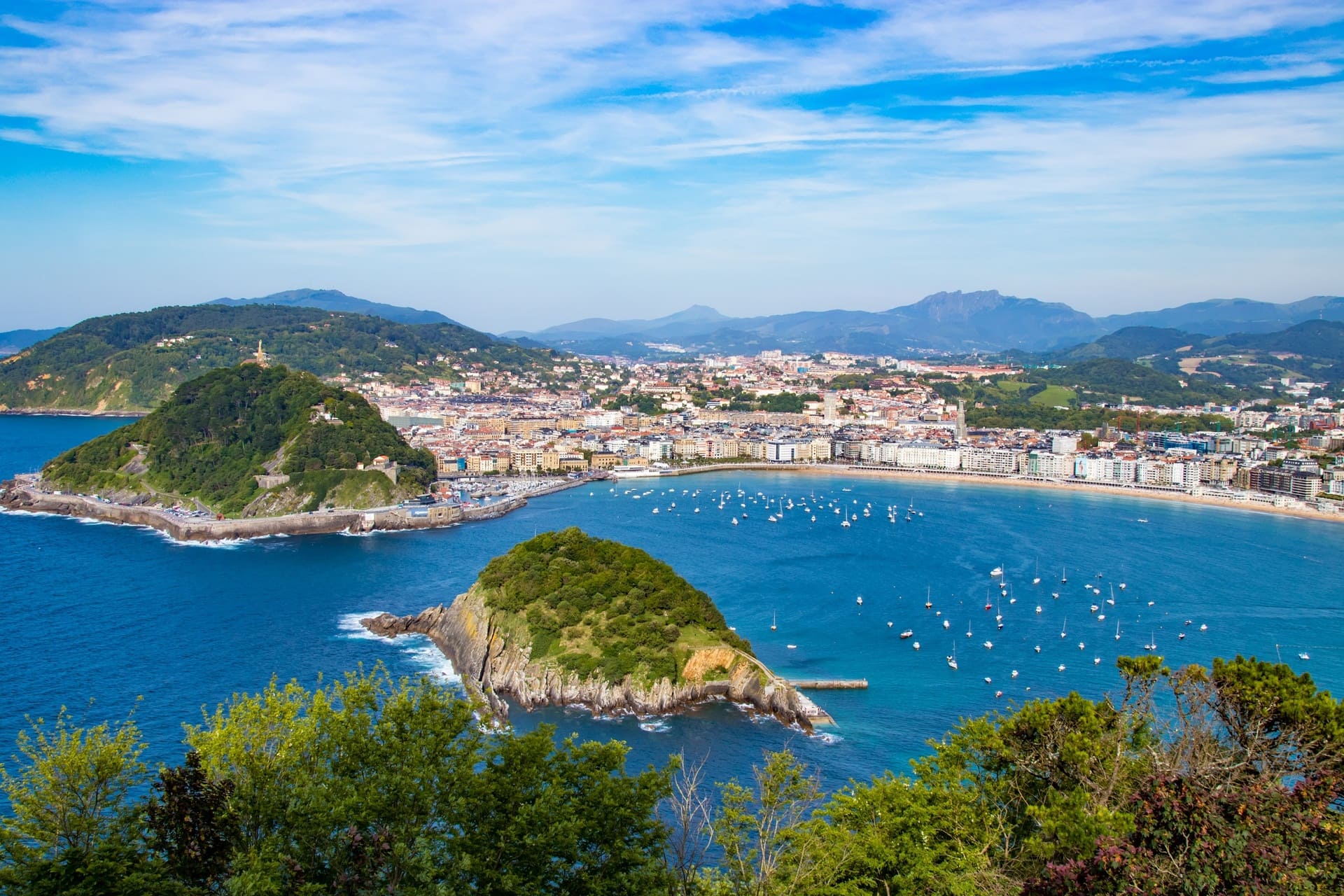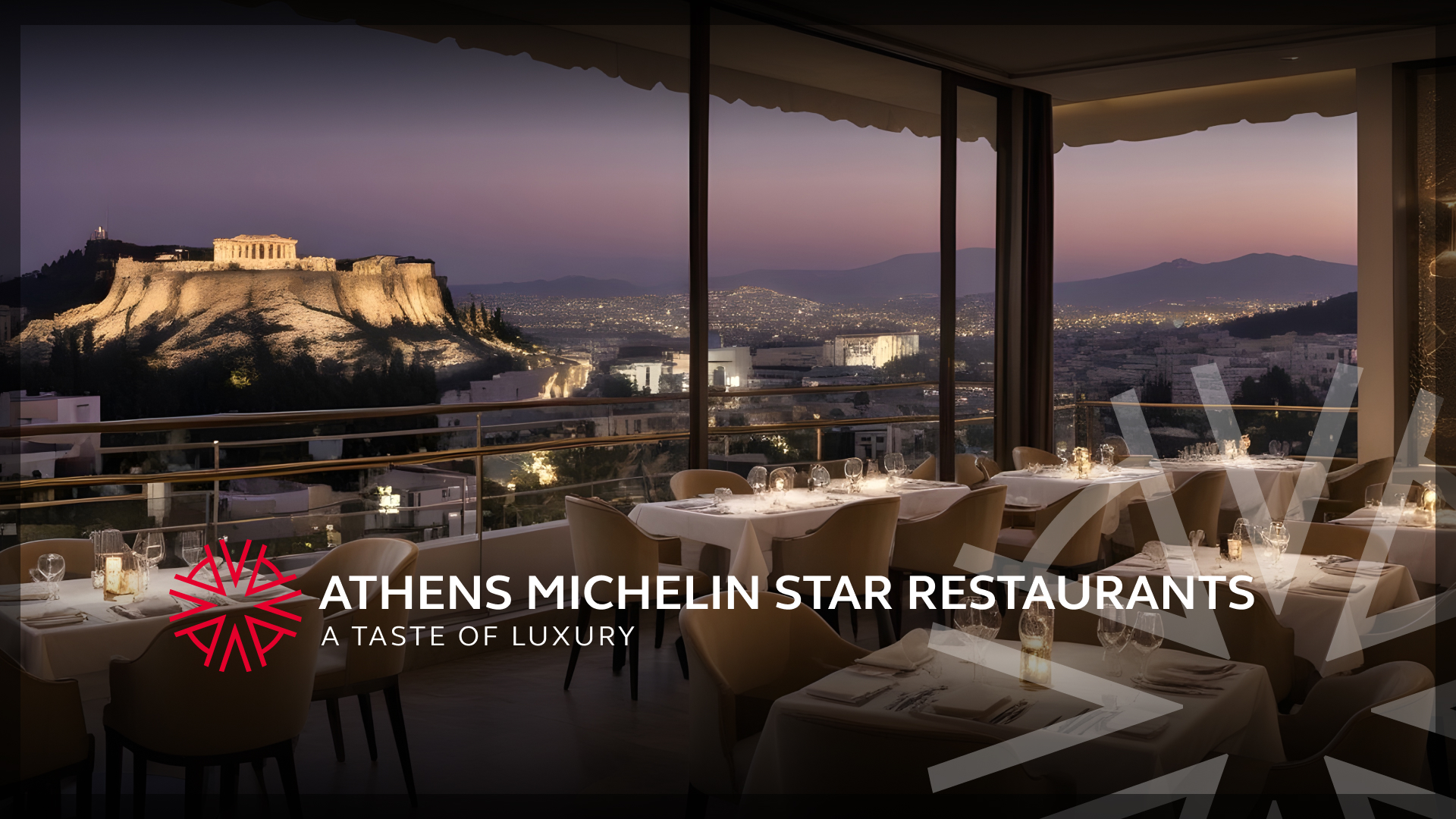The diversity of Spain may be what makes it so alluring, but its uncompromising degree of luxury definitely factors in.
Spain is a country of 47 million people spread across 17 independent regions and over a dozen coastal areas, also known as Costas (and two autonomous territories, Ceuta and Melilla, on the African continent).
The Atlantic saturates Spain’s northern cities with lush, green landscapes and some of Europe’s best surf.
Their southern counterparts bask in the Mediterranean sun.
Not to be outdone, incredible mountain ranges carve up the interior, creating ski resorts in winter and hiking trails in summer.
So, it’s no surprise that entrepreneurs, investors, and their families have flocked to Spain for generations. An influx that has exponentially increased year-over-year since the country launched its Golden Visa program in 2013 (following neighboring Portugal’s in 2012).
One of the ultimate lifestyle destinations on the planet deserves an ultimate lifestyle guide, so here it is – everything from the country’s history to fine dining and leisure, personally compiled by Astons experts.
The ultimate guide to Spain’s luxury lifestyle and the most effective, streamlined, and advantageous way entrepreneurs, investors, and their families can make it their power move of 2024.
A brief history of Spain
Spain, emerging from a mix of Christian kingdoms and Moorish rule in the Middle Ages, unified under the Catholic Monarchy, Ferdinand and Isabella, in the late 15th century.
This union heralded the Spanish Golden Age in the 16th and 17th centuries, marked by explorers like Columbus and Cortés and the creation of a vast empire spanning the Americas and Asia.
However, costly wars and internal strife led to the decline of its global empire by the 19th century. The 20th century saw further upheaval, including the Spanish Civil War and Franco’s dictatorship, followed by a transition to democracy after 1975.
By joining the European Union in 1986, the Schengen Zone in 1995, and adopting the euro in 2002, modern Spain has become a key European and global player in manufacturing, tourism, and textiles.
Today, Spain is celebrated for, well, being Spain – a community proud of its rich cultural heritage, from the flamenco music and dance of Andalusia to the masterpieces of artists like Picasso and Gaudí.
Why become a Spanish resident?
There is an endless list of reasons why entrepreneurs, investors, and their families make Spain their power move:
- Unparalleled retirement strategy
- ETIAS exemption and access to the EU
- Increasing the value of a real estate portfolio
- Capitalizing on the incredible ROI opportunities
- Leveraging the highly-coveted EU Plan B
- Adopting the Spanish lifestyle
For most, however, it is typically all of the above.
Generally speaking, however, there are four key reasons why Spain and Spanish residency are sound investments and simply make sense:
- An EU member: Spanish residents benefit from visa-free travel within the EU’s 27 countries. This includes popular destinations like France, Italy, Germany, and neighboring Portugal, offering a significant advantage for those who value ease of movement across Europe.
- Sound Investment: Real estate or business venture investments via the Spanish Golden Visa reward investors with financial ROI and residency – which can lead to citizenship and a Spanish passport [tied for the most powerful passport in the world].
- Quality of life: To call it exceptional is an understatement. A nation with a communal feel, incredibly diverse, and every region has its own character – from laidback coastal towns to bustling cities, traditional vineyards to mountain forests; Spain enriches your life and lifestyle.
- Highly Coveted EU Plan B: A real-life Plan B is not something that your family needs to learn how to live when the time comes. It is a part of your life already and simply something you switch to; your:
- Vacation life
- Retirement plan
- Second home
- Income-generator
Most importantly, a real-life Plan B must create a barrier between your family and the issue – a door to the underground bunker that anyone can simply walk up to is not going to do that.
And, with the EU’s 2025 implementation of their e-Visa system, ETIAS, your Spanish residency exempts you and your family from needing any government approval to access your Plan B when needed.
Spain’s prime locations for luxury living
The most essential element of residency is, of course, where to reside.
Most entrepreneurs, investors, and their families who seek Spanish residency achieve it by investing in the very lucrative Spanish real estate market.
In fact, Spain’s real estate option is one of the most popular Golden Visa investment channels in the EU.
But Spain has 17 diverse regions and more than a dozen coastal areas, so which is the right one for you?
The Spanish Costas
First, the most coveted areas of the country, Spain’s famous Costas:
- Northern Costas
- Costa Verde
- Costa de Galicia
- Costa Vasca
- Atlantic coast
- Eastern Costas
- Costa Brava
- Costa Dorada
- Costa del Azahar
- Costa de Valencia
- Costa Blanca
- Southern Costas
- Costa Cálida
- Costa de Almería
- Costa Tropical
- Costa del Sol
- Costa de la Luz
The regions of Spain
Now, here’s how those Costas fit into Spain’s geography and real estate market:
- Andalucia: Spain’s most popular, this southern region is famous for sun, beaches, and high-end living. Andalucia is home to cities like Seville, Granada, Marbella, and the highly coveted Costa del Sol. Properties range from traditional whitewashed villas in the countryside to luxurious coastal estates. Residents experience a vivid culture with flamenco, fiestas, and naturism.
- Catalonia: With Barcelona as its heart, this region fuses coastal luxury and urban sophistication. Expect contemporary accommodations, spacious apartments, and exclusive estates along the Costa Brava. Known for its rich artistic heritage, innovative cuisine, and diverse landscapes, from beaches to mountains.
- Madrid: The capital city and cultural and economic hub, it’s the ultimate location for stylish urban living – think apartments, penthouses, and city neighborhoods like Salamanca and Chamberí. Though not coastal, Madrid boasts an innovative culinary scene and green spaces like Retiro Park. A city of elegance, with lively nightlife and a robust business environment—a strategic EU capital location.
- Valencian Community: Famous for the city of Valencia and its Orange Blossom Coast [Costa del Azahar] along with the Costa Blanca of Alicante, this region offers diversity, from beachfront villas to townhouses in quaint towns. Home of paella, the Fallas festival, and a thriving arts scene, Valencia balances urban amenities and relaxed coastal living.
- Galicia: In the lush, green northwest, Galicia is a land of natural beauty [the Costa de Galicia], and those who prefer traditional stone villas or contemporary homes overlooking rugged coastlines. Known for its seafood, Celtic heritage, and the Camino de Santiago, Galicia offers a peaceful, profoundly cultural experience.
- Basque Country: This region has a powerful cultural identity. Cities like Bilbao and San Sebastián boast contemporary architecture, gourmet dining, and beautiful coastal scenery [Costa Vasca]. The region is perfect for those who appreciate fine dining and art and want to balance an urban and coastal lifestyle.
- Canary Islands: An entirely different version of Spain, the Canary Islands have a subtropical climate, creating consistent temperatures all year round. Local properties range from beachfront villas to secluded mountain retreats – outdoor activities like hiking, surfing, and golf.
- Balearic Islands: Essentially Spain 2.0, these Mediterranean islands include Ibiza, Mallorca, and Menorca. They are known for their radiant landscapes, from serene coves to famous nightlife scenes. Properties range from secluded fincas [country estates] to luxurious beachfront villas and modern apartments.
- Aragon: Known for its dramatic landscapes, from the Pyrenees to the Monegros Desert, Aragon has one-of-a-kind properties, including medieval castles and rustic estates. Cities like Zaragoza pair ancient architecture with contemporary living—the landlocked region is ideal for those seeking a quieter, nature-focused lifestyle with a rich historical backdrop.
- Castile and León: Another landlocked region is known for its castles, medieval towns, and rugged natural beauty. Property options include traditional country estates and period properties in ancient cities like Segovia and Salamanca.
- Castile-La Mancha: The land of Don Quixote, with its iconic windmills and vast vineyards. In the landlocked region between Madrid and Murcia, properties range from rustic farmhouses to modern residences in towns like Toledo and Cuenca. The region is known for its traditional crafts, decadent cuisine, and serene landscapes.
- Extremadura: An insider secret and hidden gem, Extremadura offers a serene lifestyle with its natural parks, medieval towns, and Roman ruins. The property landscape includes country homes, estates, and modern developments. Extremadura is a peaceful retreat spanning one-third of the Portugal border with rich cultural and natural attractions, ideal for nature lovers and history enthusiasts.
- Asturias: Sandwiched between Galicia and Basque, Asturias is known for its green landscapes, coastal beauty [Costa Verde], and pre-Romanesque architecture. Asturias offers a tranquil setting with old-world homes. It’s perfect for those who love the diversity of outdoor activities- including hiking in the Picos de Europa or exploring the rugged coastline. The region is also famous for its cider, seafood, and folk traditions.
- Navarre: In the north of Spain, Navarre is a land of contrasts, from the majestic Pyrenees to the lunar landscapes of the Bardenas Reales. Its property market features mountain chalets in the ski resorts or modern apartments in Pamplona. Bordering France, it’s ideal for those who appreciate outdoor activities such as hiking and skiing alongside a strong local culinary and wine tradition.
- Cantabria: Nestled between the Cantabrian Mountains and the Bay of Biscay, Cantabria is a northern coastal region of pure natural beauty. Its property market includes elegant seafront homes, rural cottages, and modern apartments in the region’s capital, Santander. Known for its beautiful beaches, lush green landscapes, and prehistoric caves, Cantabria is a paradise for nature lovers.
- La Rioja: A small landlock but renowned northern region, La Rioja is celebrated for its world-class wines and beautiful vineyards. The property market ranges from traditional vineyard estates to modern homes, all with a unique blend of rural charm and cultural richness and a focus on gastronomy and wine. The region’s landscape is dotted with medieval villages, monasteries, and rolling hills, making it a picturesque and serene place to live.
- Murcia: Murcia, in southeastern Spain, is known for its sunny climate, fertile lands, and beautiful coastline – the Costa Cálida. The region has a variety of properties, from beachfront apartments in areas like La Manga to traditional fincas in the countryside. It is ideal for those seeking a warm climate or simply a beach and urban lifestyle mix. However, Spanish language competency is necessary in Murcia.
The Spanish lifestyle
Spanish food is more than paella
Spanish cuisine is nothing short of passionately made food.
These are dishes crafted from recipes perfected over centuries, paired with wine grown in vineyards that stamp their regional identity into every bottle.
Spain can satisfy everyone’s taste, from casual small plates (tapas) to elegant fine-dining experiences.
At the latest count, there are 271 restaurants with at least one Michelin star – far too many to list, but here are some of our experts’ personal favorites:
Madrid
- DiverXO: Madrid’s only three Michelin-star restaurant, led by chef Dabiz Muñoz, known for its avant-garde and highly creative dishes
- Santceloni: With a sophisticated menu that pays homage to traditional Spanish cuisine, Santceloni holds two Michelin stars
- Ramón Freixa Madrid: A two-Michelin-star restaurant known for its contemporary interpretation of Spanish dishes, emphasizing flavor and presentation
- Coque: Awarded two Michelin stars, Coque is a unique culinary experience that combines innovation with traditional family cooking
Catalonia
- El Celler de Can Roca: Located in Girona, this three-Michelin-star masterpiece is often considered one of the best in the world, known for its creative dishes inspired by traditional Catalan cuisine
- Lasarte: In Barcelona, Lasarte is a three-Michelin star showpiece that offers exceptional dining with innovative dishes
- Enoteca: Located in the Hotel Arts in Barcelona, Enoteca boasts two Michelin stars and provides a contemporary take on Mediterranean cuisine
- ABaC: Another of Barcelona’s three Michelin-star gems, ABaC is known for its innovative culinary techniques and artistic presentation
Basque Country
- Arzak: A three Michelin-star restaurant in San Sebastián, Arzak is famous for its innovative Basque cuisine, combining traditional flavors with modern techniques
- Akelarre: Overlooking the Bay of Biscay are Akelarre’s three Michelin stars and an experience that is all about creative dishes alongside stunning views
- Mugaritz: Thanks to its experimental and avant-garde cuisine, Mugaritz earned two Michelin stars
- Martín Berasategui: Located just outside San Sebastián, this three-Michelin star restaurant is famed for its refined Basque dishes
Valencian Community
- Quique Dacosta: Dénia’s three-Michelin-star restaurant takes an innovative approach to Mediterranean cuisine and artistic presentation
- El Poblet: Valencia’s El Poblet holds one Michelin star and serves creative dishes inspired by traditional Valencian recipes
- Ricard Camarena: A two-Michelin-star restaurant in Valencia with a unique culinary approach focusing on fresh, local ingredients and bold flavors
- L’Escaleta: Nestled in the mountains of Alicante, L’Escaleta, two Michelin stars, offers a fusion of traditional and modern cuisine, emphasizing local ingredients
Spain’s high-end shopping districts
In Spain, luxury shopping is an experience that blends the country’s rich cultural heritage with contemporary elegance. The major cities, Madrid and Barcelona, are the epicenters of high-end retail, hosting the world’s most famous brands.
Calle Serrano is Madrid’s most prestigious shopping avenue. Found in the Salamanca district, you’ll find:
- Chanel
- Hermès
- Cartier
- Saint Laurent
- Carolina Herrera
- Tiffany & Co.
Besides Calle Serrano, Barrio de Salamanca is an affluent area with high-end stores – from Madrid’s best independent designers to international jewelers.
Lined with modernist architecture, Barcelona’s most famous shopping avenue is Passeig de Gràcia. Here, you will find many luxury brands, including:
- Louis Vuitton
- Gucci
- Bulgari
- Valentino
- Versace
- Balenciaga
Barcelona is also home to El Born, a neighborhood with a bohemian vibe where you can find chic boutiques, avant-garde designers, and artisanal shops.
Another key shopping avenue, Avenida Diagonal, intersects with Passeig de Gràcia and hosts a range of high-end stores and exclusive shopping centers.
Puerto Banús is known for its luxurious marina and designer shops in the heart of the Costa del Sol. It’s a hotspot for high-end brands like:
- Dior
- Jimmy Choo
- Michael Kors
- Dolce & Gabbana
Meanwhile, Marbella Old Town – another Spain insider’s secret – offers a charming shopping experience with a variety of upscale boutiques and local artisan shops nestled in its picturesque streets.
In addition to these major shopping destinations, fantastic shopping can be found in most Spanish cities. Let loose and explore; the least you will find is Spain’s traditional, local craftsmanship quality.
Exclusive leisure activities in Spain
Skiing
The Pyrenees, stretching along the border with France, is home to the country’s best skiing – with residents and tourists alike battling for the chalets each winter.
Resorts like Baqueira-Beret and Formigal provide excellent skiing conditions but cater to all levels of ability, from beginners to advanced, and even offer additional, high-adrenaline activities like heli-skiing.
Equestrian – Horseback riding
With its strong equestrian heritage, Andalusia is the perfect place for horseback riding – or horse lovers [hippophiles] in general.
The region offers various experiences, from riding through the rolling hills of the local countryside to taking part in a private dressage show. Exclusive equestrian clubs like the Royal Andalusian School of Equestrian Art in Jerez showcase the beauty of Andalusian horses.
Yachting
With extensive coastlines and beautiful islands, yachting is a shared passion and hobby among the Spanish community.
Puerto Banús, in Marbella, is one of the most exclusive marinas in the Mediterranean – providing berths for super-yachts up to 50 meters.
A network as much as a Mediterranean epicenter for sailing, the marina is a hub for the top echelon of the international sailing community thanks to the easy access to Marbella’s nightlife, shopping, and beautiful beaches.
Additionally, Marina Port Vell in Barcelona is one of the few marinas in the Mediterranean capable of accommodating mega-yachts (up to 190 meters). It has state-of-the-art facilities and services, including a crew lounge, gym, and wellness center.
The prestigious Club de Mar in Mallorca accommodates yachts up to 100 meters. Club de Mar is known for its exclusive services, including a private club, swimming pool, and a range of dining options. It’s an ideal base for exploring the Balearic Islands.
And if you’re after a party, the Ibiza Magna marina is a favorite among international jet setters. Here, you get direct access to the island’s exclusive clubs. The marina is also a gateway to the calmer but equally as beautiful neighboring island of Formentera.
Championship golf
Whether you’re a seasoned golfer or simply enjoy an afternoon on the green, Spain’s golf courses have something for every level of play, combined with an exquisite level of hospitality.
Here are some of our favorite courses:
- Real Club de Golf El Prat in Barcelona: Just outside Barcelona, this club has hosted the Spanish Open multiple times. Designed by Greg Norman, the course features 45 holes spread over an expansive, beautiful landscape. It’s known for its testing play and scenic views of the Montserrat Mountains.
- PGA Catalunya Resort near Girona: Home to two world-renowned courses, the Stadium Course and the Tour Course. The Stadium Course is consistently ranked among the top courses in Europe.
- La Manga Club in Murcia: This resort features three 18-hole golf courses. The South Course, known for hosting professional tournaments, offers a challenging round, while the North and West Courses provide a mix of scenic views and exciting layouts.
- Finca Cortesin in Malaga: Host of the Volvo World Match Play Championship, Finca Cortesin is renowned for its lengthy course, superb condition, and spectacular mountain views. The resort also offers luxurious accommodations, making it a top choice for a golf holiday.
- Real Club Valderrama in Sotogrande: Known for its demanding layout and superb condition, Valderrama hosts major international tournaments, including the Ryder Cup and Volvo Masters. The course is set amidst a beautiful cork oak forest and is considered one of Europe’s best.
Spain’s private education sector
Spain has a private education system of international schools for English-language-based education.
Madrid hosts several, including the International College Spain, which has the complete IB program, and the American School of Madrid, known for its American-style education.
Barcelona, meanwhile, is home to the American School of Barcelona and the British School of Barcelona, offering a mix of American and British curricula, respectively.
The Costa del Sol has become a hotspot for international education, possibly due to the influx of foreign residents—schools like Swans International School in Marbella and Aloha College for the British and IB curriculum.
Spain’s universities, such as the University of Barcelona, Complutense University of Madrid, and the University of Granada, are also well-regarded global universities.
Astons and Spain, Tu vida perfecta
Simply put, Spain can satisfy every want, need, goal, and demand of any entrepreneur, investor, and family.
Spain is a remarkable country and remarkable community; passionate about living life to the fullest in every detail – from the prestigious real estate options to luxury lifestyle choices to its exclusive leisure activities.
While there are several extremely advantageous EU Golden Visa and citizenship by investment programs through which to secure your own EU Plan B strategy, Spain stands out as one of the countries [along with Portugal, Greece, and Cyprus] that most people enjoy living as their Plan A life.
Regardless of why you want to leverage and capitalize on Spain, Astons has an expert to advise and guide you through the process. Simply schedule your Free Confidential and Comprehensive Consultation today and start to process of creating tu vida perfecta [your perfect life].
Frequently Asked Questions
Yes, Spain has already made all preparations to implement ETIAS and once the program is officially launched, there will be no delay in Spain requiring the EU’s new eVisa program for all visitors – including US citizens.
The EU has scheduled the launch of the ETIAS eVisa for 2025, and ETIAS approval will be required for all non-EU citizens and non-EU legal residents who wish to enter Spain.
Spain Golden Visa holders will be exempt from the ETIAS program – not only for entry to Spain but for entry to all EU countries.
Healthcare in Spain is routinely rated as among the best in the world, but English proficiency depends upon where in Spain you are residing.
In areas such as Malaga, Madrid, Barcelona, and Valencia – the big Spanish cities – the private healthcare system is English-language oriented.
However, in areas such as Murcia and Almeria, expats do require at least conversational Spanish skills even at hospitals, pharmacies, and dentists.
With that said, Spain does have a thriving medical tourism industry for:
- Cosmetic and plastic surgery
- Dental
- Wellness – thermal spas and rejuvenation therapies
- Fertility
Absolutely – in 2023, three of the Top 5 Expat Cities were in Spain – numbers one, two, and three in fact.
Further, six of the Top 10 expat destinations were also in Spain.
Spain is not only a popular destination for expats, but is always in the Top 3 tourism destinations – year after year.
So, Spain offers a lot of cultural diversity. There are areas that are very expat-oriented, and have UK supermarkets, speaking English is common-place, and even English-language TV channels are available.
While, there are still other regions in Spain that are very traditional and unless you speak Spanish, you will feel like an outsider.
This greatly depends upon your situation and your wants, needs, goals, and demands.
Spain does not recognize dual citizenship – except in very limited situations, and being a US citizen is not one of them.
So, for a US citizen [as well as those from the UK, Canada, and most other countries] to become a Spanish citizen, they would be required to renounce their US citizenship.
However, if that is the intended goal, then Spain is among the best citizenships and passports to have in the world.
Spain offers many benefits that are in addition to its incredible geography – if you can believe that!
For example, Spain offers a very lucrative tax program called Beckham’s Law – yes, it is named after that Beckham.
And, Spain’s Golden Visa is a pathway to citizenship, should you choose to use it that way.














